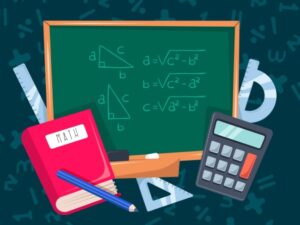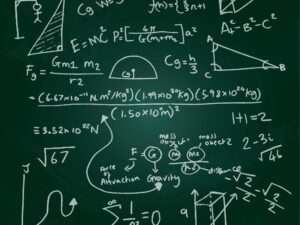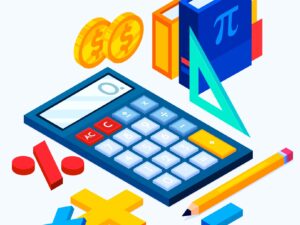Geometry
This Geometry course introduces students to the foundational concepts of Euclidean geometry through logical reasoning, problem-solving, and real-world applications. Students ...
Show more

Instructor
arapreyhan@gmail.com
Course details
Level
:
Beginner
- Description
- Notice
- Reviews
This Geometry course introduces students to the foundational concepts of Euclidean geometry through logical reasoning, problem-solving, and real-world applications. Students will explore geometric relationships, develop formal proofs, and apply algebraic skills to geometric contexts. Topics include points, lines, angles, triangles, quadrilaterals, circles, transformations, similarity, congruence, trigonometry, and three-dimensional figures. The course emphasizes mathematical communication, critical thinking, and the use of technology to deepen understanding.
Learning Objectives
By the end of this course, students will be able to:
Reasoning and Proof
- Use inductive and deductive reasoning to analyze geometric situations.
- Construct formal geometric proofs using postulates, theorems, and definitions.
Geometric Relationships
- Identify and apply properties of angles, lines, and planes.
- Analyze relationships in triangles, including congruence and similarity.
- Explore properties of polygons and classify quadrilaterals.
Transformations and Symmetry
- Perform and describe transformations in the coordinate plane.
- Understand congruence and similarity through transformations.
- Analyze symmetry in geometric figures.
Measurement and Modeling
- Calculate perimeter, area, surface area, and volume of geometric figures.
- Apply the Pythagorean Theorem and trigonometric ratios to solve problems.
- Use coordinate geometry to prove geometric relationships.
Circles and Conic Sections
- Investigate properties of circles including arcs, chords, tangents, and secants.
- Solve problems involving angle measures and segment lengths in circles.
- Explore basic properties of conic sections (optional enrichment).
Probability and Real-World Applications
- Apply geometric probability to real-world contexts.
- Model and solve problems using geometric concepts in architecture, design, and nature.
Learning Objectives
By the end of this course, students will be able to:
Reasoning and Proof
- Use inductive and deductive reasoning to analyze geometric situations.
- Construct formal geometric proofs using postulates, theorems, and definitions.
Geometric Relationships
- Identify and apply properties of angles, lines, and planes.
- Analyze relationships in triangles, including congruence and similarity.
- Explore properties of polygons and classify quadrilaterals.
Transformations and Symmetry
- Perform and describe transformations in the coordinate plane.
- Understand congruence and similarity through transformations.
- Analyze symmetry in geometric figures.
Measurement and Modeling
- Calculate perimeter, area, surface area, and volume of geometric figures.
- Apply the Pythagorean Theorem and trigonometric ratios to solve problems.
- Use coordinate geometry to prove geometric relationships.
Circles and Conic Sections
- Investigate properties of circles including arcs, chords, tangents, and secants.
- Solve problems involving angle measures and segment lengths in circles.
- Explore basic properties of conic sections (optional enrichment).
Probability and Real-World Applications
- Apply geometric probability to real-world contexts.
- Model and solve problems using geometric concepts in architecture, design, and nature.
Please, login to leave a review



